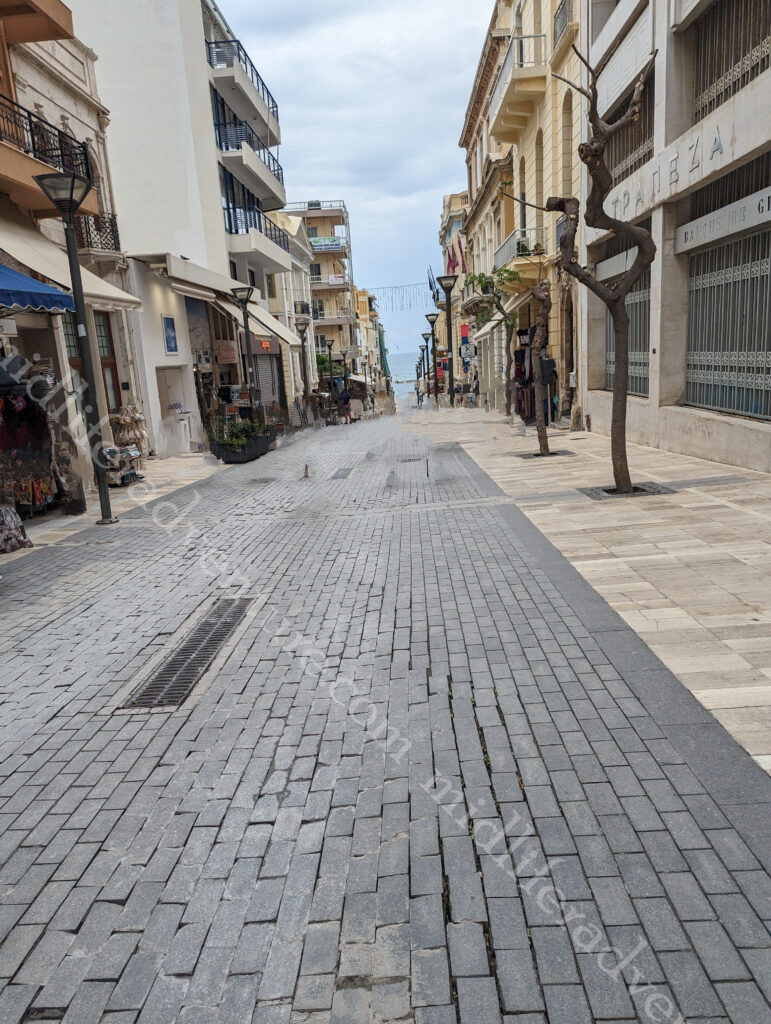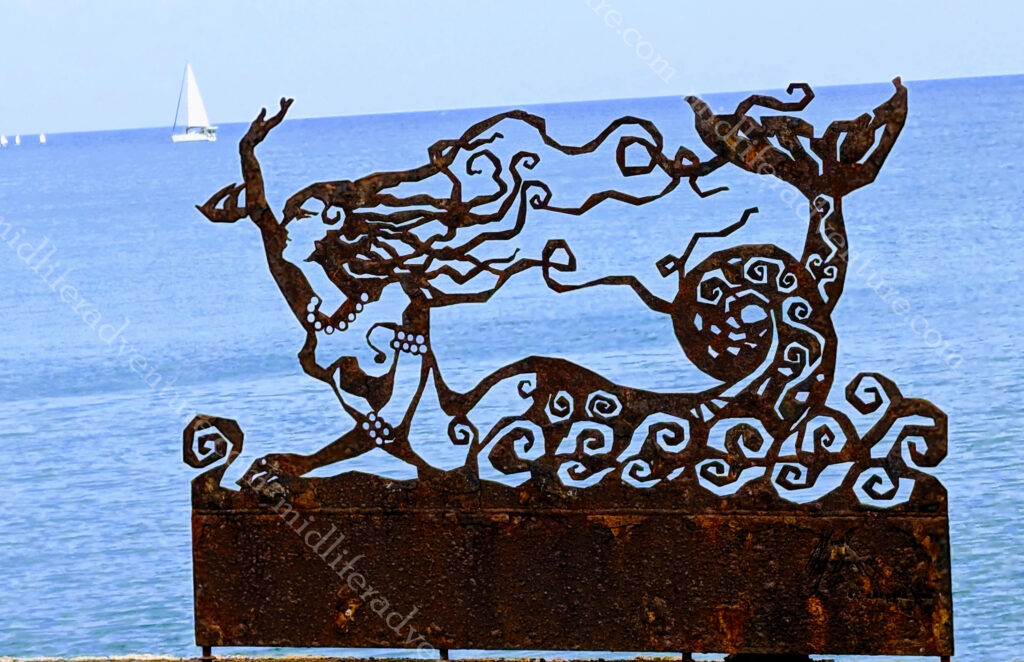Crete is the largest island in Greece by both area and population. It’s the size of a small country and doesn’t feel much like an island. It deserves around a week to visit to even scratch the surface and more like two weeks to circumnavigate and explore in any meaningful way, so our 3 days barely let us see anything.

We got off our ferry (another highly pleasant experience) and got delivered into the port of Heraklion. The waterfront here is absolutely lovely and is dominated by Venetian constructions, the most obvious of which was the Koules Fortress (Rocca a Mare).


Our hotel was fairly close (about 1.3km so we chose to walk, rather than fight the taxi queue. Dragging our big bags along cobblestones and on streets with little or no sidewalks was an interesting challenge. But it wasn’t that far and the trek was over soon enough. It was late enough that we just had a shower and did our favourite google search “cheap eats near me”.
The closest thing that came up was a place called Chagiati. We don’t usually name accommodation places or restaurants because they are mostly pretty interchangeable. But this one gets a special mention as it was amazing. A little place on a corner run by a guy who runs the front while his mother is in the back cooking traditional fare. It was cheap, friendly and delicious.








In fact, it was so good we came back again the next night. Having chatted to the guy at length he came up with a few suggestions for us to try, that were not even on the menu. He and his mum just made it up as they went along, and they were great too. The best thing that this restaurant did, was introduce us to Loukoumádes. These are a form of Greek doughnut that are typically covered in honey but this place served them with fresh fruit and ice cream with a chocolate sauce and it was amazing.




Heraklion is the largest city and capital of the island of Crete. It is the fourth largest city in Greece with a population of a little over 200,000. Looking at the tourist map there was a lot of stuff on the shoreline, a central old town area and a park running around the outside where the old walls and fortifications were.
So we decided to walk around the park to do the outer loop and finish down by the water, having wandered through the oldtown section. Surrounding the city there are a series of defensive walls and other fortifications. They were first built in the Middle Ages, but were rebuilt when the Venetians ran the place. Heraklion is one of the best fortified cities in the Mediterranean and the walls remain largely intact to this day. The blurb said that the fortifications managed to withstand the second longest siege in history (21 years), before the city finally fell to the Ottomans in 1669.




Keeping our walking tour going we saw the oldtown area. Now the main street in Oldtown (running down to the port) is a bit like any big city mall where the traffic is excluded and shops, cafes and restaurants line the street. For no reason that I could reasonably find (beyond some 1897 murder of a Christian), the street was called the 25th of August Street.

The walk continued and took in the Morosini Fountain, Eleftherias Square, Saint George and Sabionara Gates, the Archeological Museum, and the Heraklion Town Hall.








By now we had found ourselves down on the waterfront again (but this time without our big bags) and with time to explore. So the obvious starting place was the Koules Fortress (Rocca a Mare). They believe that the site was first fortified by the Arabs in the 9th or 10th centuries. In 1462, the Venetian Senate approved for the Castello a Mare to be built. Wiki tells me that old ships were filled with stone, and were sunk to form a breakwater and increase the area of the platform on which the fortress was built.











The fortress has walls that are up to 8.7m thick at some places and is in remarkable shape (and is well worth the 4 euro admission fee).
From the fort the rock wall continues for another 1.5 km into the sea. Jill found that half way out was a mermaid statue that looked like it was worth seeing.

The thing that we did not realise while starting the trek, was that the rock wall was also the home of some incredible artwork. So as we wandered, we photographed, and generally just had a good time in discovering things that we had not expected.












The Bronze Age Minoan Palace of Knossos, also known as the Palace of Minos, is outside the city but accessible by a local bus that will deliver you to the doorstep. It is the largest Bronze Age archaeological site on Crete. The blurb suggests that the palace was first built about 2000 BC, which would explain the high proportion of rocks to be found.




Crete is the home to many sites with evidence of Neolithic (10,000-4500BC) civilizations and there is evidence at Knossos of this too. The current site was discovered in 1878 with excavations starting in 1900. Many of the things that are there today have brought criticism from many archaeologists as acts of fantasy, while others defend it as a reasonable attempt.






Crete has it all and getting to see it all was more than our limited schedule would allow. There were beaches, seaside fishing villages and historical sites. The best we could manage was Heraklion and Knossos, but it was enough to know that we would happily come back.